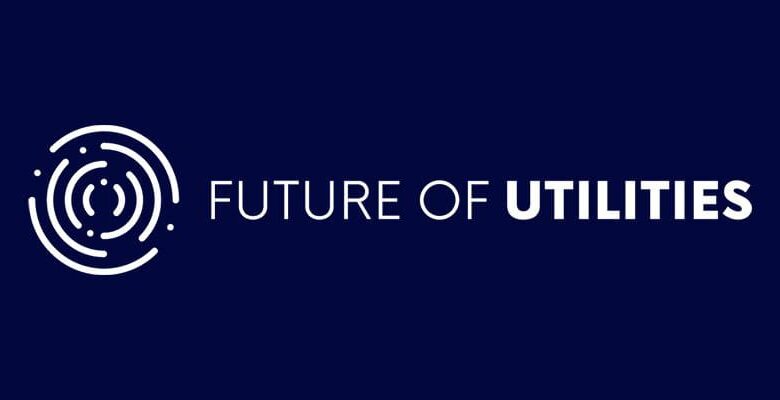The Future of Utilities: A Year of Transformation

The utilities sector is experiencing one of the most significant shifts in its history. What was once considered a steady, predictable industry is now being reshaped by rapid technological adoption, sustainability goals, and changing customer expectations. This transformation is not a decade away; it is happening now.
The global utilities market is expected to grow from approximately USD 6.0 trillion in 2022 to USD 8.31 trillion by 2027, representing a CAGR of 6.8% (verifiedmarketresearch.com). At the same time, demand is rising even faster. The U.S. Department of Energy projects that data centers alone could consume up to 12% of national electricity by 2028, more than doubling today’s share (Berkeley Lab). These pressures collide with climate volatility, aging infrastructure, and rising customer expectations, making it clear that the industry cannot rely on incremental change.
Why Transformation Can’t Wait
Utilities face a convergence of challenges that make modernization unavoidable. Infrastructure built decades ago is reaching the end of its life. The American Society of Civil Engineers has given U.S. energy infrastructure a grade of just C-, underscoring years of underinvestment and rising risks of failure (ASCE Report Card). At the same time, an aging workforce is retiring, taking decades of institutional knowledge with them. Deloitte projects that nearly 50% of the utilities workforce will be eligible to retire within the next 10 years, creating an urgent skills gap (Deloitte).
These structural problems are magnified by external pressures: extreme weather events test resilience, regulators demand stricter compliance, and customers expect fast, transparent service. Transformation is not just about technology; it is about building an industry capable of meeting today’s needs while preparing for tomorrow’s uncertainty.
Why Field Service Sits at the Center
Field service is where customers feel the impact of utilities most directly. A delayed repair or a lack of communication during an outage can undermine trust instantly. This makes field operations not just a cost center but the face of reliability, efficiency, and resilience.
What places field service at the center of transformation is its ability to connect the back office with the frontline in real time. Seamless, live updates between office staff and field crews mean decisions are faster, compliance is automatic, and customers stay informed. A single view of assets, crews, and performance eliminates silos and ensures that what leadership plans translates into immediate action in the field.
Modern utilities field service management makes this possible: predictive analytics to anticipate failures, scheduling that sends the right crews with the right skills, and mobile tools that allow live updates from the field back to the office. Inefficient operations are estimated to cost utilities up to 30% of their revenue, proving that this connection is not just beneficial, it is essential.
Utilities Industry Trends Defining the Future
The transformation of utilities is already visible:
- Resilience and reliability: Building systems that can withstand demand surges and extreme weather is now a top priority.
- Digital operations: IoT sensors, AI, and analytics are enabling real-time insight and smarter decision-making across the enterprise.
- Workforce renewal: As experienced staff retire; utilities are equipping a new generation with digital tools that bridge the skills gap.
- Customer-centric service: Proactive communication, outage maps, and transparency are becoming the new baseline.
- Sustainability commitments: Utilities are embedding carbon reduction and resource efficiency into long-term strategy.
These trends highlight the shift from reactive service to proactive, data-driven management. Utilities that embrace asset management strategies and workforce modernization will be best positioned to adapt quickly.
Leadership and Cultural Shift
Technology may be the visible face of transformation, but leadership and culture determine whether it succeeds. Utilities have long operated as infrastructure-first organizations, where reliability and compliance dominated priorities. While these remain critical, the future requires a broader mindset: one that sees customers, data, and field operations as equally central to long-term success.
Leaders must champion this shift. Investing in new systems without building a culture of adoption risks wasted potential. Empowering field crews with mobile tools is only effective if leadership values their input and integrates their feedback into decision-making. Similarly, fostering customer-centric practices means moving beyond the transactional view of service delivery and treating communication, transparency, and trust as strategic assets.
This cultural transformation is also essential for workforce renewal. As nearly half of the utilities workforce approaches retirement, younger employees expect digital-first environments, agile practices, and a sense of purpose tied to sustainability goals. Leadership that embraces this mindset not only attracts talent but also unlocks the full value of modernization initiatives.
What Steps Should Utilities Take Next?
Recognizing the pressures is only the first step. The question for utilities in 2025 is how to act decisively. Several priorities stand out:
- Invest in field service modernization to unify office and field operations through real-time communication and predictive analytics.
- Digitize asset management to extend the lifespan of infrastructure, reduce downtime, and improve maintenance planning.
- Empower the workforce with mobile tools and digital training, ensuring that retiring expertise is replaced with institutionalized knowledge.
- Prioritize customer experience by making transparency, live updates, and proactive communication part of every interaction.
- Embed sustainability into operational decisions, aligning compliance with long-term resilience and efficiency.
These steps are not separate initiatives. They are interconnected actions that together define the path to resilience and growth. Utilities that leverage analytics and KPI tracking will also gain the visibility needed to measure and accelerate progress.
A Defining Year
As 2025 continues to unfold, utilities face a decisive moment. This is not a year for minor adjustments. It is a year to confront aging assets, embrace digital tools that fill workforce gaps, and transform field service into the backbone of resilience and customer trust.
The future of utilities will be defined not by how well organizations react to disruption, but by how boldly they lead through it. Those that act now, modernizing field service, investing in digital infrastructure, and reimagining customer engagement – will set the standard for what reliable, sustainable, and connected utilities look like in the years ahead.




